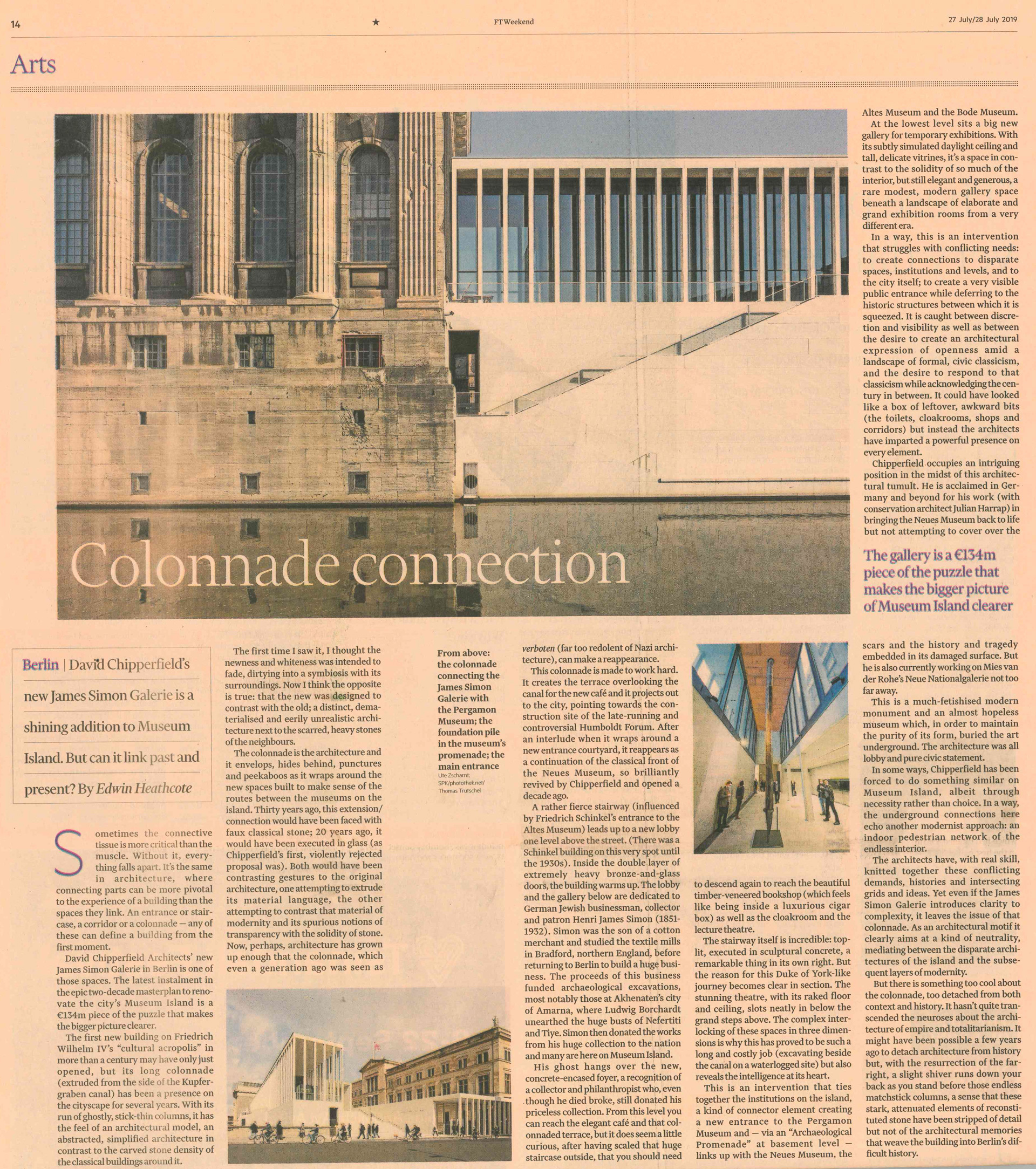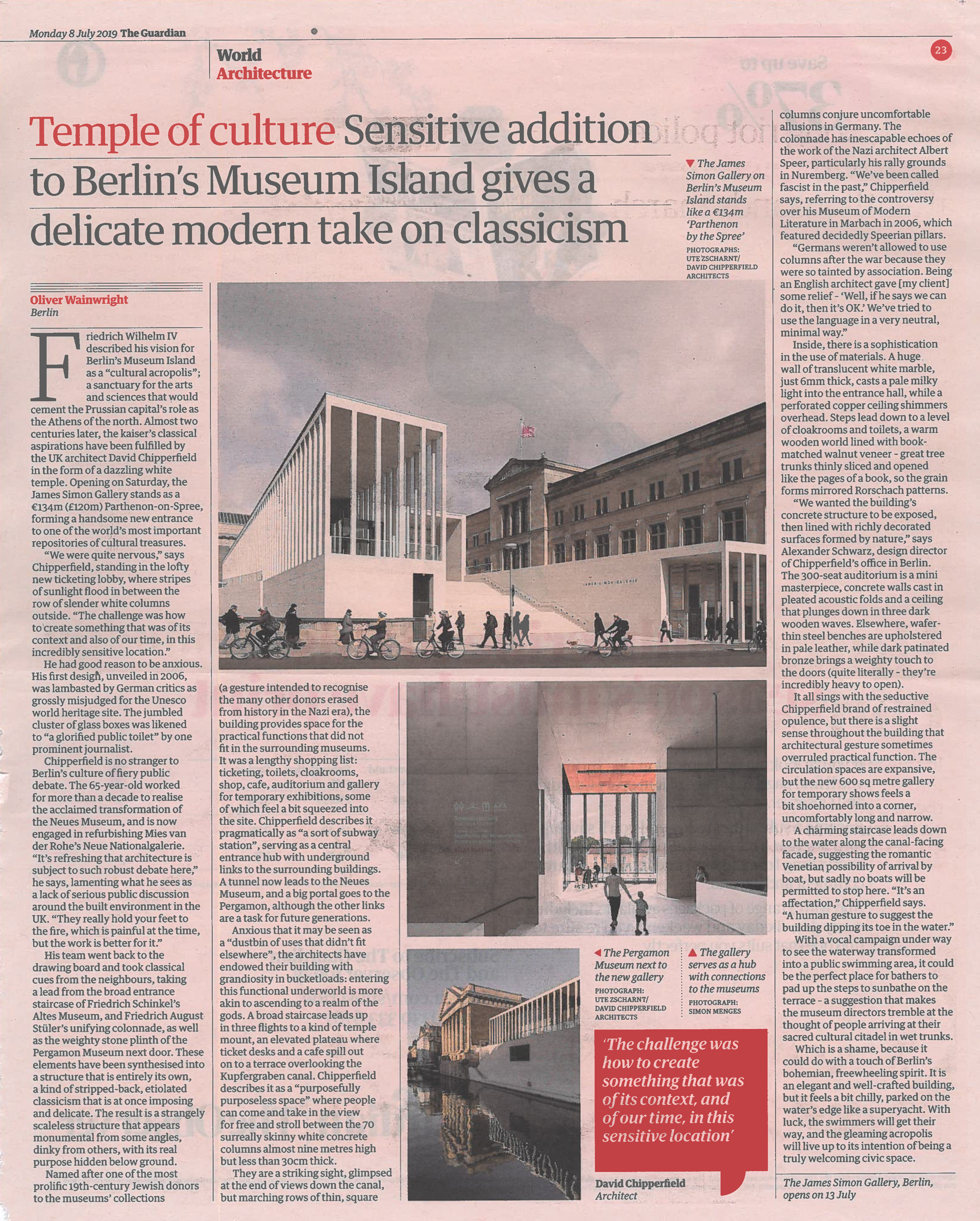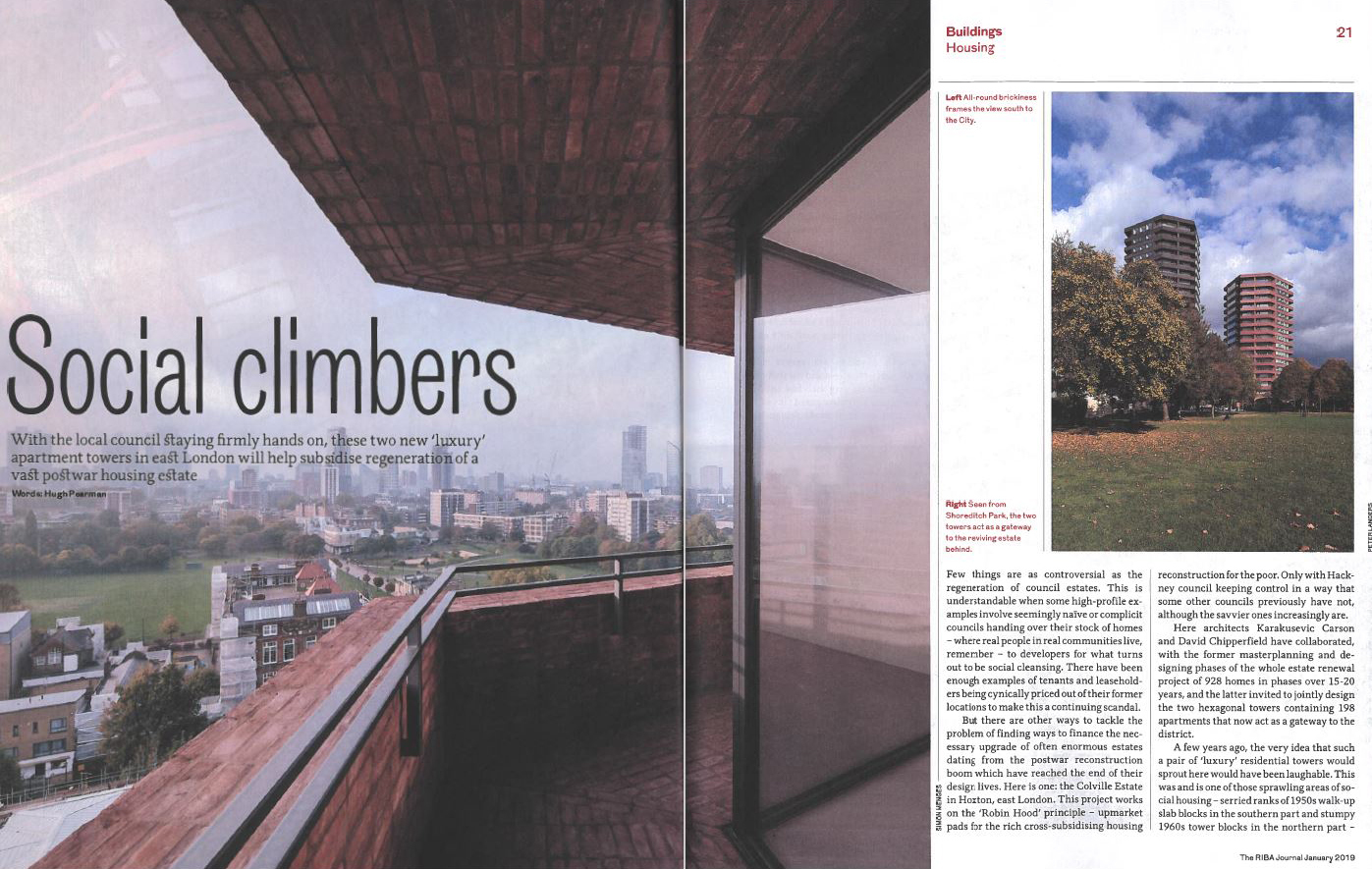David Chipperfield's new James-Simon-Galerie is a shining addition to Museum Island. But can it link past and present? asks Edwin Heathcote
Sometimes the connective tissue is more critical than the muscle. Without it, everything falls apart. Itâs the same in architecture, where connecting parts can be more pivotal to the experience of a building than the spaces they link. An entrance or staircase, a corridor or a colonnade â any of these can define a building from the first moment.
David Chipperfield Architectsâ new James Simon Galerie in Berlin is one of those spaces. The latest instalment in the epic two-decade master plan to renovate the cityâs Museum Island is a âŹ134m piece of the puzzle that makes the bigger picture clearer.
The first new building on Friedrich Wilhelm IVâs âcultural acropolisâ in more than a century may have only just opened, but its long colonnade (extruded from the side of the Kupfergraben canal) has been a presence on the cityscape for several years. With its run of ghostly, stick-thin columns, it has the feel of an architectural model, an abstracted, simplified architecture in contrast to the carved stone densityof the classical buildings around it.
The first time I saw it, I thought the newness and whiteness was intended to fade, dirtying into a symbiosis with its surroundings. Now I think the opposite is true: that the new was designed to contrast with the old; a distinct, dematerialised and eerily unrealistic architecture next to the scarred, heavy stones of the neighbours.
The colonnade is the architecture and it envelops, hides behind, punctures and peekaboos as it wraps around the new spaces built to make sense of the routes between the museums on the island. Thirty years ago, this extension/connection would have been faced with faux classical stone; 20 years ago, it would have been executed in glass (as Chipperfieldâs first, violently rejected proposal was). Both would have been contrasting gestures to the original architecture, one attempting to extrude its material language, the other attempting to contrast that material of modernity and its spurious notions of transparency with the solidity of stone. Now, perhaps, architecture has grown up enough that the colonnade, which even a generation ago was seen as verboten (far too redolent of Nazi architecture), can make a reappearance.
This colonnade is made to work hard. It creates the terrace overlooking the canal for the new café and it projects out to the city, pointing towards the construction site of the late-running and controversial Humboldt Forum. After an interlude when it wraps around a new entrance courtyard, it reappears as a continuation of the classical front of the Neues Museum, so brilliantly revived by Chipperfield and opened a decade ago.
A rather fierce stairway (influenced by Friedrich Schinkelâs entrance to the Altes Museum) leads up to a new lobby one level above the street. (There was a Schinkel building on this very spot until the 1930s). Inside the double layer of extremely heavy bronze-and-glass doors, the building warms up. The lobby and the gallery below are dedicated to German Jewish businessman, collector and patron Henri James Simon (1851-1932). Simon was the son of a cotton merchant and studied the textile mills in Bradford, northern England, before returning to Berlin to build a huge business. The proceeds of this business funded archaeological excavations, most notably those at Akhenatenâs city of Amarna, where Ludwig Borchardt unearthed the huge busts of Nefertiti and Tiye. Simon then donated the works from his huge collection to the nation and many are here on Museum Island.
His ghost hangs over the new, concrete-encased foyer, a recognition of a collector and philanthropist who, even though he died broke, still donated his priceless collection. From this level you can reach the elegant café and that colonnaded terrace, but it does seem a little curious, after having scaled that huge staircase outside, that you should need to descend again to reach the beautiful timber-veneered bookshop (which feels like being inside a luxurious cigar box) as well as the cloakroom and the lecture theatre.
The stairway itself is incredible: top-lit, executed in sculptural concrete, a remarkable thing in its own right. But the reason for this Duke of York-like journey becomes clear in section. The stunning theatre, with its raked floor and ceiling, slots neatly in below the grand steps above. The complex interlocking of these spaces in three dimensions is why this has proved to be such a long and costly job (excavating beside the canal on a waterlogged site) but also reveals the intelligence at its heart.
This is an intervention that ties together the institutions on the island, a kind of connector element creating a new entrance to the Pergamon Museum and â via an âArchaeological Promenadeâ at basement level â links up with the Neues Museum, the Altes Museum and the Bode Museum.
At the lowest level sits a big new gallery for temporary exhibitions. With its subtly simulated daylight ceiling and tall, delicate vitrines, itâs a space in contrast to the solidity of so much of the interior, but still elegant and generous, a rare modest, modern gallery space beneath a landscape of elaborate and grand exhibition rooms from a very different era.
In a way, this is an intervention that struggles with conflicting needs: to create connections to disparate spaces, institutions and levels, and to the city itself; to create a very visible public entrance while deferring to the historic structures between which it is squeezed. It is caught between discretion and visibility as well as between the desire to create an architectural expression of openness amid a landscape of formal, civic classicism, and the desire to respond to that classicism while acknowledging the century in between. It could have looked like a box of leftover, awkward bits (the toilets, cloakrooms, shops and corridors) but instead the architects have imparted a powerful presence on every element.
Chipperfield occupies an intriguing position in the midst of this architectural tumult. He is acclaimed in Germany and beyond for his work (with conservation architect Julian Harrap) in bringing the Neues Museum back to life but not attempting to cover over the scars and the history and tragedy embedded in its damaged surface. But he is also currently working on Mies van der Roheâs Neue Nationalgalerie not too far away.
This is a much-fetishised modern monument and an almost hopeless museum which, in order to maintain the purity of its form, buried the art underground. The architecture was all lobby and pure civic statement.
In some ways, Chipperfield has been forced to do something similar on Museum Island, albeit through necessity rather than choice. In a way, the underground connections here echo another modernist approach: an indoor pedestrian network of the endless interior.
The architects have, with real skill, knitted together these conflicting demands, histories and intersecting grids and ideas. Yet even if the James Simon Galerie introduces clarity to complexity, it leaves the issue of that colonnade. As an architectural motif it clearly aims at a kind of neutrality, mediating between the disparate architectures of the island and the subsequent layers of modernity.
But there is something too cool about the colonnade, too detached from both context and history. It hasnât quite transcended the neuroses about the architecture of empire and totalitarianism. It might have been possible a few years ago to detach architecture from history but, with the resurrection of the far-right, a slight shiver runs down your back as you stand before those endless matchstick columns, a sense that these stark, attenuated elements of reconstituted stone have been stripped of detail but not of the architectural memories that weave the building into Berlinâs difficult history.





